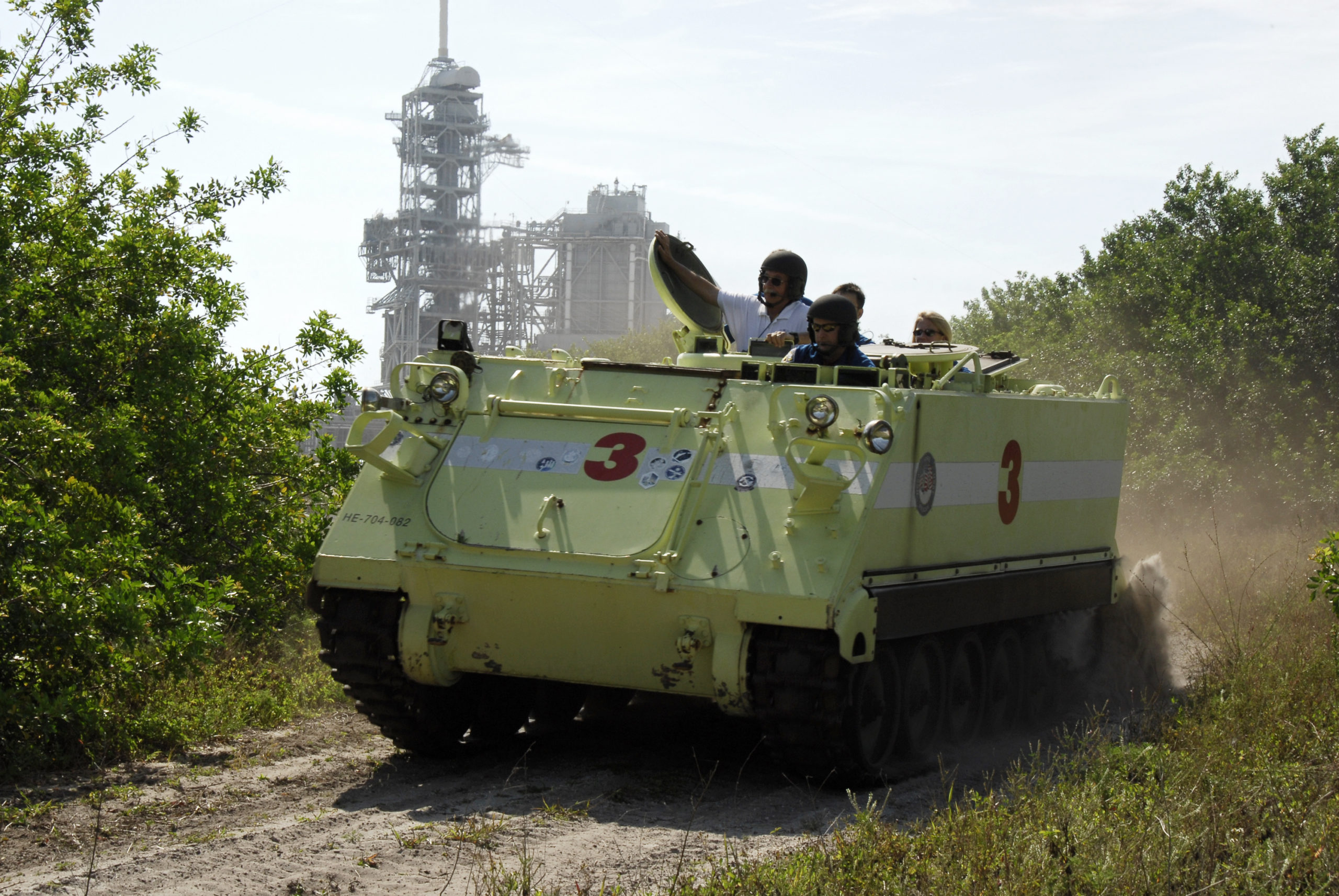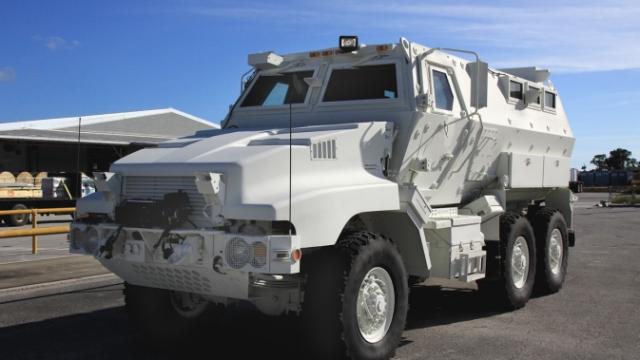This past December, a free shipment of four heavily armoured vehicles arrived at NASA courtesy of the US military. The Mine-Resistant, Ambush-Protected Vehicles (MRAPs) are all veterans of wars in Iraq and Afghanistan, and they’re about to embark on an unexpected second life as getaway vehicles in case something goes horribly wrong at the Kennedy Space Center in Florida.
Picture: NASA/Jim Grossman
Ever since NASA began launching humans into space, it has worried about accidents on the launchpad. A massive explosion that can fling you out of Earth’s orbit is, in fact, quite dangerous. If you have even a few seconds to escape, you will need a getaway car that is both fast and projectile-proof.
A squad of firefights packed into a M113. NASA/David Seymour
That’s where the MRAP comes in, as Steve Weintz writes in a piece for War is Boring.
The MRAP will replace another military hand-me-down — the Vietnam-era M113 — as astronaut getaway car. The M113 is an armoured personnel carrier with tank-like tracks instead of wheels. During the Apollo and Shuttle eras, ziplines from the towers would deliver escaping astronauts straight into an underground bunker with two M113s ready to rumble.
The new MRAP, with its four-inch glass and heavy armour, is faster and less cramped than the old M113s.

Firefighters and astronauts learn to drive a M113. NASA/Kim Shiflett
The M113 plan was never put to use, thankfully, and neither was an earlier, wackier plan that involved spring-loaded couches:
NASA gave serious thought to the ground-blast problem during the Apollo program. The solution the agency developed was, frankly, bizarre. With enough warning, the astronauts and gantry techs would hop into fast elevators and plummet 30 stories to the ground, then dive into a bunker built into the launch pad.
Inside the “Rubber Room” they would have strap themselves into spring-loaded couches to ride out the explosion. The Rubber Room was provided with enough supplies for a 24-hour stay until NASA could dig the survivors out of the rubble.
We’ll never know how well the Rubber Room would have worked — and with luck, we’ll never have to know about MRAPs either — but these emergency escape plans are a stark reminder that going to space is still a dangerous endeavour. If leaving earth requires a series of controlled explosions, then we better be prepared if any of those explosions shoot out of our control. [War Is Boring on Medium]

